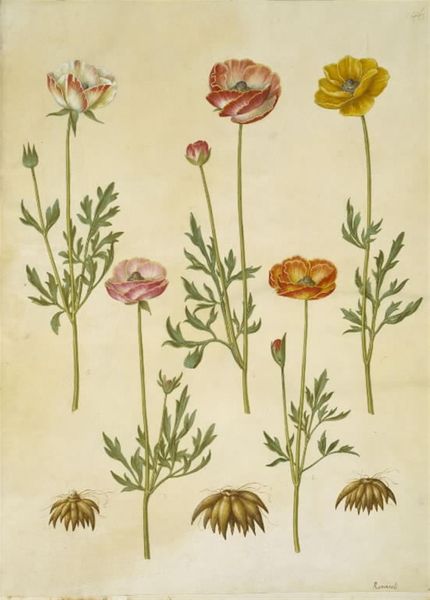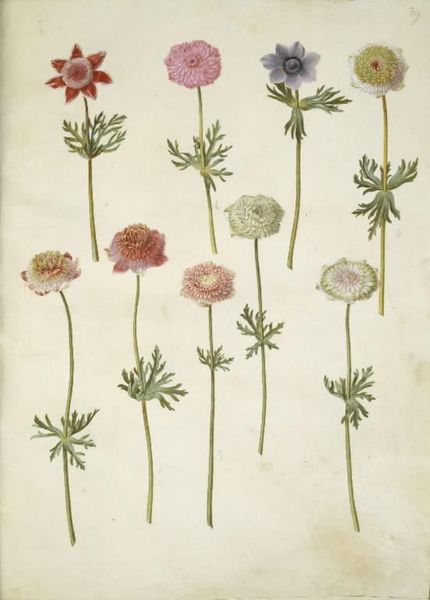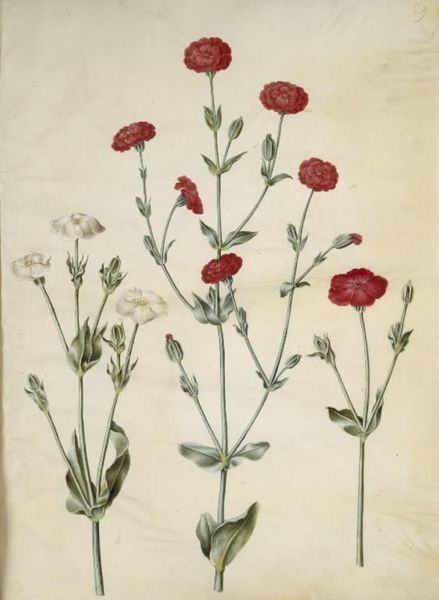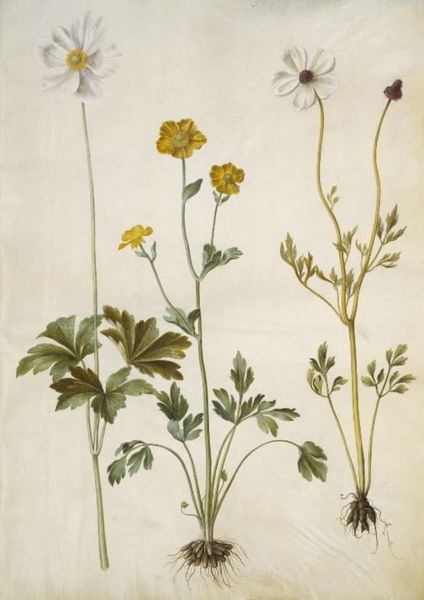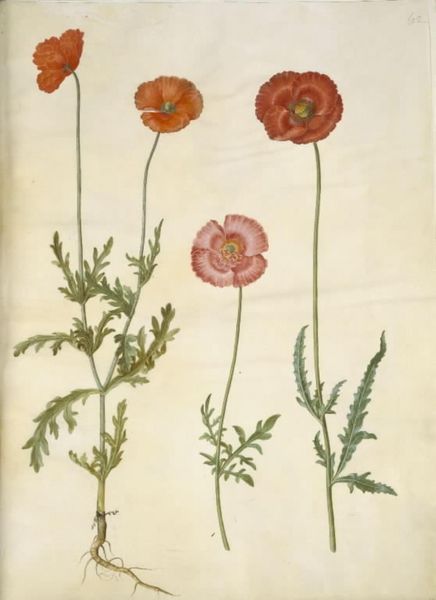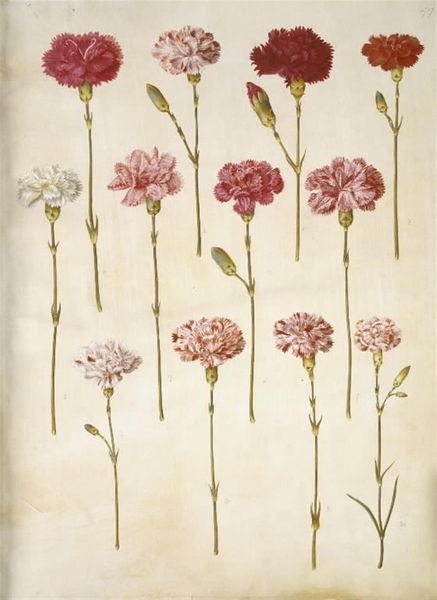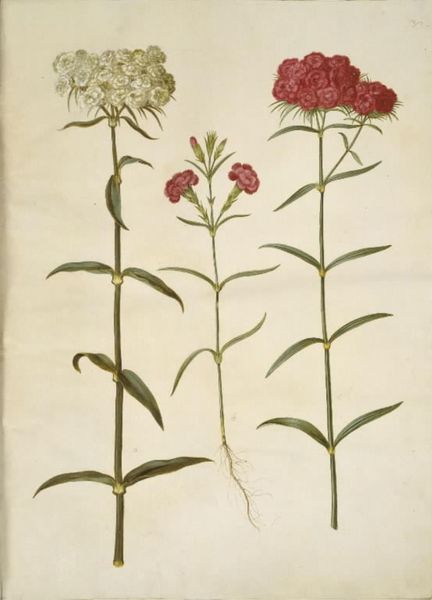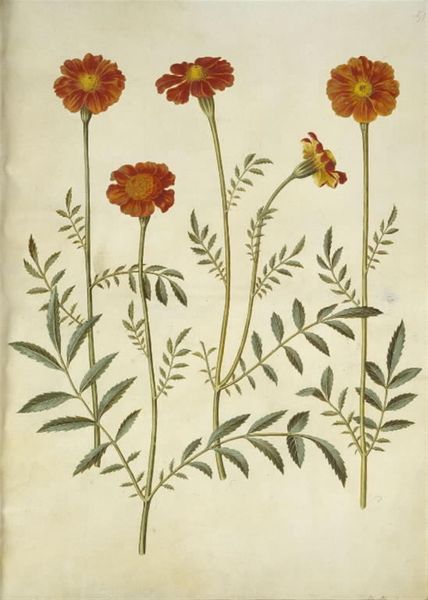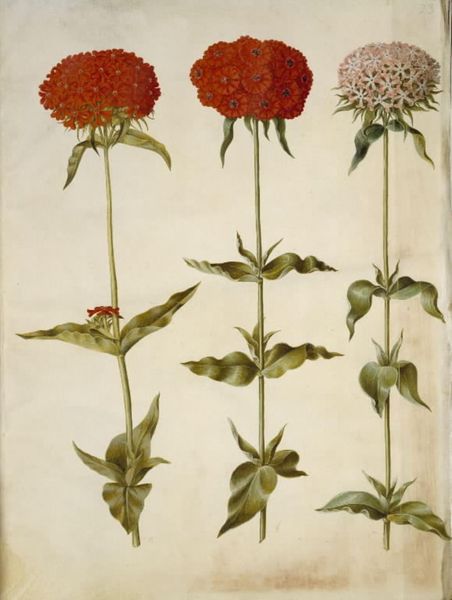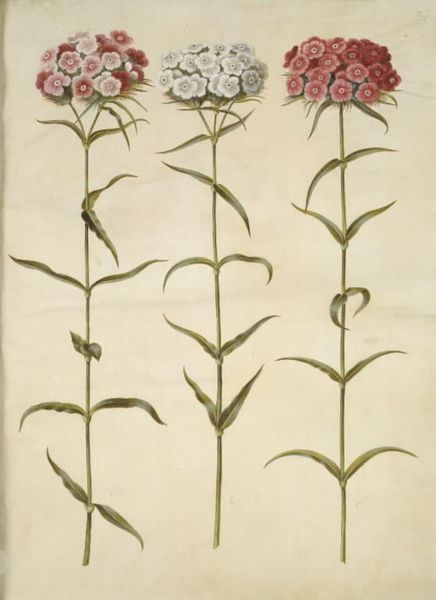
drawing, painting, gouache, watercolor
#
drawing
#
water colours
#
painting
#
gouache
#
watercolor
#
coloured pencil
#
academic-art
Dimensions: 505 mm (height) x 385 mm (width) (bladmaal)
Hans Simon Holtzbecker made this watercolor on parchment of Ranunculus asiaticus, also known as a buttercup, probably in the mid-17th century. During this period, botanical illustration flourished across Europe, driven by scientific curiosity, the rise of horticulture, and the patronage of wealthy collectors. Holtzbecker worked in Hamburg, Germany, during a time when the city was a center for trade and intellectual exchange. The meticulous detail in his rendering reflects the scientific impulse to document and classify the natural world. But more than that, botanical art was something of a social phenomenon, a means by which to express both wealth and taste. Moreover, collections of botanical illustrations or actual specimens might find their way into cabinets of curiosities: precursors to the modern museum. To fully appreciate this artwork, we need to examine not only its artistic qualities, but also the historical context that shaped its creation. Researching the social and scientific networks of 17th-century Hamburg and understanding the patronage system that supported artists like Holtzbecker can reveal the intertwined relationships between art, science, and society.
Comments
No comments
Be the first to comment and join the conversation on the ultimate creative platform.
